The Complete Guide to app monetization for Publishers
Get a PDF copy of the guide using the form below, or scroll down to read the entire guide right on this page.
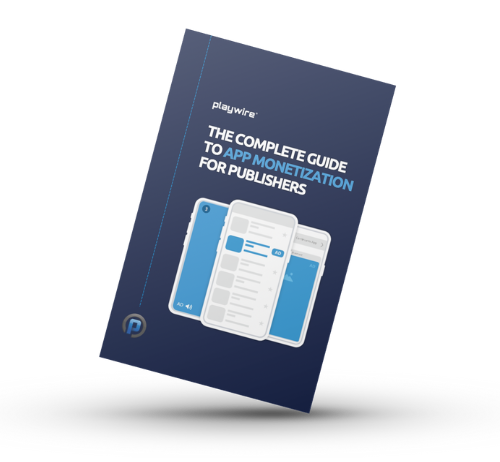
Don't Have Time To Read the Entire Guide Now?
We'll email you a downloadable PDF version of the guide and you can read later.
All of our content is generated by subject matter experts with years of ad tech experience and structured by writers and educators for ease of use and digestibility. Learn more about our rigorous interview, content production and review process here.
Built with the expertise of:
INTRODUCTION
Publishers have to reach users where they live. And where users live in 2021 is in mobile apps. Building a great app opens the door to millions of users you would never be able to reach with a traditional website. "Build it and they will come": that's the first step.
The second - and most important - step: monetizing your mobile app.
In this guide, we will take a deep dive into app monetization for publishers, providing insight into how to choose the right strategy that maximizes your profit. Read on for answers to all of your questions about mobile app monetization.
table of
contents
Understanding App Monetization for Publishers
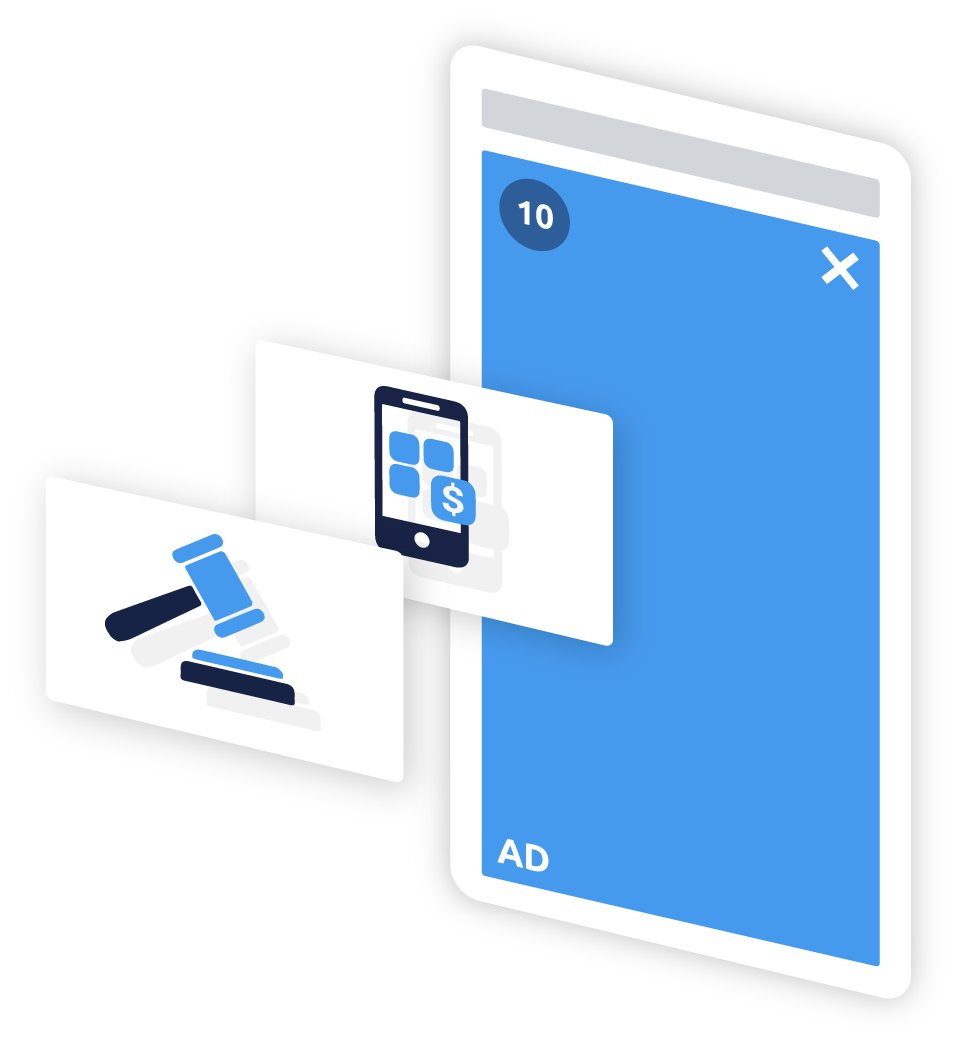
As a publisher, you live or die by your ability to make money from your user base. That means you're always on the lookout for new revenue sources and ways to increase revenue from existing sources.
Whether you already have an app or are thinking about developing one, monetizing is a key way to boost your bottom line and extend that reach.
So, what is app monetization for publishers? It's a relatively simple concept that is often buried under mountains of technical jargon. Put simply, monetizing is learning how to make money from your user base through a mobile app.
There are quite a few different ways to monetize your app, each of which works well in different circumstances. Choosing the method that best fits your brand, user experience preferences and goals is the biggest challenge. We'll examine each app monetization method in depth later in this guide.
App Monetization: By the Numbers
The data for app monetization is compelling.
People Have Access: To start, consider sheer use numbers: 81% of Americans owned a smartphone in 2019 - up from only 35% eight years earlier. While smartphones can access traditional websites, their primary function is to house mobile apps.
Everyone Uses Apps: Apps aren't simply for the tech-savvy crowd either. With more than 204 billion apps downloaded in 2019, it's reasonable to expect mobile apps to reach nearly all types of smartphone users.
They've Got The Time: Users are spending a large amount of time on mobile apps. In 2018, the average American spent 3.6 hours on a mobile device each day. And 88 percent of that time is spent within apps - not on a web browser.
Apps Are Where The Action Is: In 2021, media consumption takes place in mobile apps. Yes, websites and other media still have a share of the market, but it's nowhere near what it once was. Seven of every eight minutes of media consumption on smartphones takes place within an app.
How Apps Make Money
Here’s one last app monetization statistic for you: experts predict that in-app spending will reach $270 billion annually by 2025. That doesn’t even account for in-app ad revenues and several other types of monetization, which topped $31.9 billion in Q4 2020 alone.
The takeaway? There is big money to be made through app monetization.
Now, let’s take a look at some of the most common types of app monetization.
In-App Advertising
In-app advertising is a popular app monetization strategy for publishers. It's a familiar approach for anyone who has run traditional banner and sidebar ads on a website before.
While in-app advertising shares a lot of characteristics with traditional website ads, there are some key differences to keep in mind. Depending on the type of app you have, such as a mobile game, a banner ad could harm the overall user experience (UX) if it detracts or distracts from the in-app experience.
There are a few common types of in-app ads to consider:
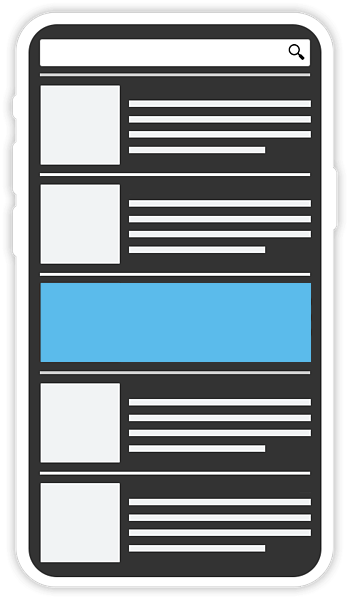
Banner
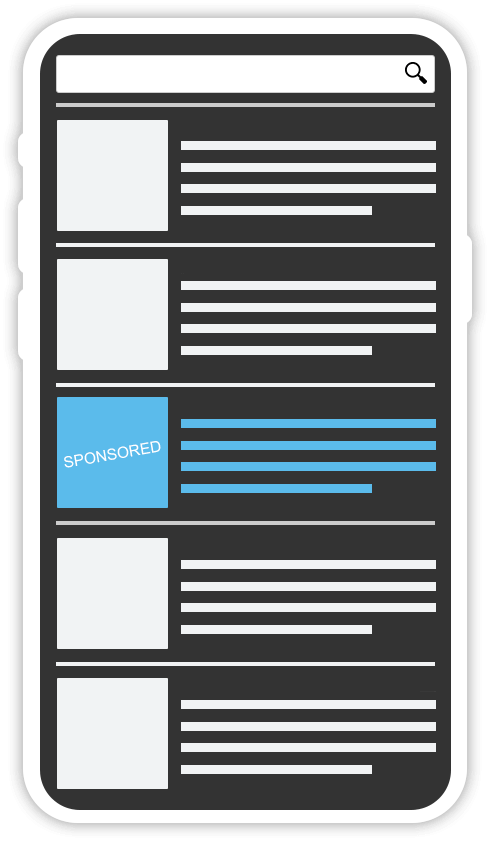
Native

Interstitial
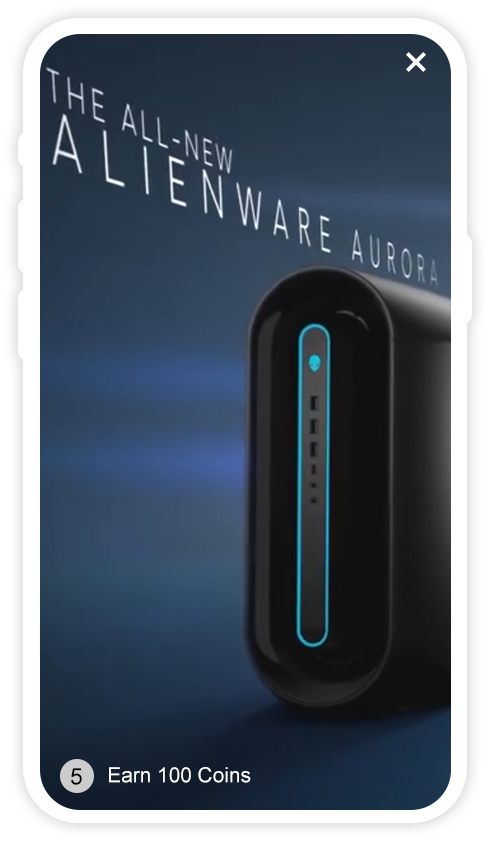
Rewarded Ads
Banner Ads
A banner ad is an advertisement delivered by an ad server to display in certain places within an app. These ads can target the user based on the user’s data and preferences.
Native Ads
Native ads are designed to feel “native” to your app. Instead of incorporating an advertiser’s branding and design, a native ad blends with the design elements of your app and may even be designed to look like another post or feature within it.
Interstitial Ads
Banner and native ads can sometimes distract from the app user’s experience because they appear alongside or on top of the app’s content. Interstitial ads seek to solve this problem. These are full-screen ads that appear between phases of the user’s app experience. If a user selects a video from a list of videos, for example, the interstitial ad might appear before a video ad loads.
Rewarded Ads
Rewarded ads are particularly popular in mobile games but have been adapted to fit many other types of apps. The basic idea behind reward ads is to give something to the user for viewing an ad. Rewarding a mobile game user with another try at a failed level if they watch an advertiser’s video is a classic example of a reward ad.
The bottom line
In-app advertising is a common way to monetize an app, but it can present UX challenges if done incorrectly, so you’ll just want to approach it strategically. In terms of profitability, these ads work best for publishers who already have a very large app user base.
Subscription Apps
Instead of asking users to pay a large upfront fee to download your app, you could ask them to pay a relatively small amount each month to use the app. This is the basic idea behind the subscription model of app monetization.
Building an App Subscriber Base
Unless your brand is well-established and widely recognized, you might find it challenging to convince users to subscribe to your app. No matter how great your app and its content is, users won't shell out the monthly subscription cost without getting to experience the app beforehand.
There are two main solutions that can help publishers build a loyal subscriber base:
- Free trials. Offering your app for free for a specified time period allows users to spend time in the app, engage with its content and rack up reasons to subscribe once the free trial is over.
- Freemium apps. If you choose to monetize via the freemium model, you will have to offer some valuable features of your app for free but reserve other highly desirable features for an upgraded subscription status — one that costs money.
The bottom line
Building enough loyalty with users to convince them to pay a monthly subscription cost is the main challenge of this type of app monetization. However, when done right, the subscription model can generate stable revenue for months or years and increase your profit per user exponentially.
Data Monetization
Everything users do inside of your app generates data - particular content they interact with, times of the day they log on and information they enter into the app are all data points. These bits of data provide valuable information about how users interact with your content and what you can do to improve UX.
You can also use this data to monetize your app. Here's how:
Target Ad Delivery to Increase CPMs
Imagine your app has a set of users who interact heavily with content about sports cars. What kind of ad are they most likely to interact with inside your app - ads selling sports cars or ads selling life insurance?
The answer is pretty clear. And this is only one of the millions of examples of how you can use app user data to target in-app ads to users.
So why does this matter? Because third-party advertisers pay higher CPMs when their ads can be targeted to consumers who are more likely to convert to customers.
Collect and Sell First-Party Data from Your App
As discussions about digital privacy develop, this option is somewhat more controversial than other app monetization methods for publishers. The idea is to collect data from users of your app (called first-party data) and sell it to companies and advertisers who will use it to inform their marketing strategies.
If you are considering this method of app monetization, keep a few items in mind:
- You can and should allow users to opt-out of having their data collected while using your app. (In some cases, you may be legally required to do this.)
- You can inform your users about how their data will be used.
This strategy works best when you have a large user base from which to gather data. (It is called Big Data, after all.)
The bottom line
App data monetization can be more profitable than many other monetization methods. But keep legal considerations in mind and assess whether the size of your data set will yield truly valuable data before choosing this route.
In-App Purchases
If you are in eCommerce or provide a service, offering in-app purchases may be the perfect monetization solution for you. But this app monetization idea isn't limited to physical products - you can sell virtual products, too.
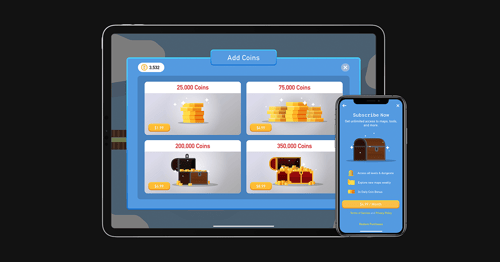 (source)
(source)
Let’s take a look at the options.
Selling Products and Services in Your App
Providers of products and services often favor this method of app monetization. And while a mobile app marketplace for making in-app purchases can deliver a great UX and even boost sales, keep in mind that the major app stores like Apple and Google take a cut.
If you don't currently sell products or services, consider whether there is anything you could or would like to sell through your app. For example, if your users are fans of your brand, you could sell branded items like hats and shirts. In-app purchases can blend nicely with other app monetization strategies for publishers.
>Selling Virtual Currency or Assets in Your App
By building an app, you're already in the virtual world. So why not sell something virtual? This app monetization strategy has skyrocketed to popularity in mobile games. Games commonly offer virtual, in-game currency in exchange for actual dollars and cents (or pounds, or yen... you get the idea).
What users can buy with virtual currency must be enticing enough to convince them to turn over actual cash. Offering access to premium content and the ability to use premium features are common ways to monetize an app via in-app purchases.
The bottom line
App store commission fees can take a bite out of profits from in-app purchases, but the ability to monetize in-app actions or features through virtual currency or assets offers new revenue-generating opportunities for publishers.
App Transaction Fees
Monetizing an app via transaction fees can provide huge opportunities for publishers who have a broad base of users who might want to sell items or services to one another.
Think of it as owning a shopping mall and taking a percentage of all of the sales made by retailers inside the mall. You set up a "marketplace" of sorts inside your app and allow users to list a product or service for sale. When a purchase is made, you take a small percentage of it.
The bottom line
Taking a cut of transactions users made with one another inside your app can quickly scale and generate a lot of revenue. But you must have a broad enough user base and enough added marketing value to convince users to list their items or services on your app.
Transactional Apps
Monetizing a transactional app is a lot like monetizing an app via user transaction fees - except you don't take a cut of what one user pays another. Instead, you take a cut every time a user initiates a transaction your app offers to them.
Notable examples of this app monetization model are apps that allow users to buy stocks and cryptocurrencies, but the possibilities are endless.
The bottom line
If your app offers a transaction that is unique or valuable enough to users, they will be willing to pay a little extra to account for your fee. Fail to offer enough value, however, and this monetization method will flop.
Free App Monetization for Publishers
In some cases, learning how to monetize a free app can provide the most return on your investment as a publisher. That's because users are far more likely to download free apps, and when you have more app users, you have more potential ways to generate revenue.
Below, we discuss the following free app monetization methods for publishers and how you can implement them:
- Removal of in-app ads through an upgrade
- App sponsorships
- Using your app for affiliate marketing
- Marketing automation via mobile
- Combining multiple monetization methods
Removal of In-App Ads Through an Upgrade
If you are running ads inside your mobile app, you are already generating revenue through cost per mille/thousand impressions (CPM), cost per click (CPC), or cost per action (CPA). But you can further monetize your app while leaving every feature free for all users.
You can do that by offering to remove in-app ads for users who pay a one-time or monthly fee to upgrade. For the most dedicated users of your app, this may be a great prospect if they would like to avoid intrusive banner ads or interstitial ads while enjoying your content.
Example:
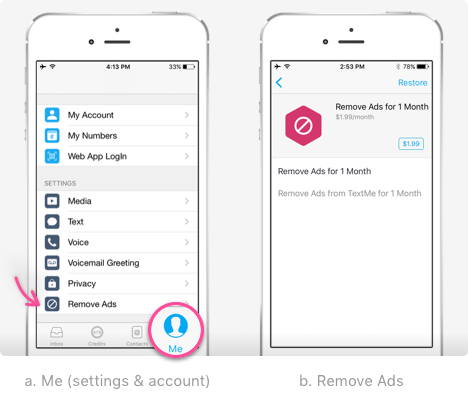 (source)
(source)
App Sponsorships
Even in the app development phase, a sponsorship can be a great way to generate revenue and income through your app. There are a few ways to configure sponsorships to monetize your app:
- Ask a company to invest in your app with the promise of in-app promotion of that company's products or services.
- If your app is already developed, ask a company to "sponsor" new or premium app features by paying a certain amount. Then add the company's brand somewhere prominent within the app or specific feature.
- Provide opportunities for businesses to promote sponsored content within your app. You can charge for this service and label the content as "sponsored" inside your app.
Using Your App for Affiliate Marketing
You can break into performance-based marketing by using your app as a vehicle to sell other apps or even products and services. This is called affiliate marketing, and with the right in-app placement of affiliate ads or links and a broad user base, you can generate a lot of revenue without charging app users a cent.
The major app stores like Apple, Windows, and Google offer affiliate programs that compensate you every time someone jumps from an affiliate ad or links in your app to download a different app.
You can also become a member of various companies' affiliate programs and use your in-app content to promote their products. When users click your affiliate link or graphic and go to the company's website and make a purchase, you get a cut.
Marketing Automation Via Mobile
Mobile marketing automation platforms allow you to segment users of your app based on information about their demographics, current location, or in-app usage behavior. Then, they allow you to reach each group of users in different ways, such as through mobile push notifications, emails, in-app messages, and text messages.
But how do you use mobile marketing automation to monetize your app? There are plenty of ways to integrate marketing automation with other app monetization methods:
- Partner with physical businesses. You get a cut of the revenue when your app directs a user near the business to check out a sale or special promotion in person.
- Bolster your data monetization strategy. Use marketing automation segments to generate distinct user groups and information about their preferences and demographics. That data can boost your in-app ad CPMs or be sold to third parties.
- Build sales funnels to target different user segments. Create app content that leads users down paths that match their preferences or behavior and feeds into affiliate ads or in-app purchases.
Combining Multiple Monetization Methods
You can artfully combine several app monetization methods to generate enough revenue while keeping your app completely free for users. This is particularly helpful for publishers who have not yet developed a large enough base of users to make any single mobile app monetization strategy profitable enough.
For example, you could use a combination of banner ads in highly visible parts of your app and affiliate links within your app's content to build out two free app revenue streams. Alternatively, you could combine app sponsorships with data monetization. The possibilities are virtually endless.
Reverse App Monetization Strategies
We've spent a lot of time talking about how publishers can monetize apps. Now let's talk about how you can reverse that.
If that sounds crazy, it's understandable. But reverse app monetization is a legitimate revenue-generating model for mobile apps.
How Does Reverse App Monetization Work?
At some point, most publishers struggle to grow their app's user base to the level they want it to reach. Even for free apps, getting enough consumer buy-in to make your monetization model profitable can feel impossible. Great content and perfect in-app experiences sometimes just aren't enough.
But what if you paid people to use your app? That would almost certainly help. And it's the basic idea behind reverse monetization for mobile apps.
Here's how it works: users complete a task that is either within the app or recorded by the app. The completion of that task earns them a form of currency worth actual money. And you pay it to them.
As you can imagine, reverse app monetization can generate a lot of eager users very quickly.
How Do Publishers Make Money Through Reverse Monetization?
This is the big question for publishers. You make money through reverse monetization of your app by directing users to complete a task that is beneficial to another company. And then you sell your technology to that company.
A few notable apps have made reverse monetization work for them:
- Sweatcoin. This app pays users in "sweatcoins" to reward them for walking. These sweatcoins are redeemable for real goods like smartphones. The app makes money via several app monetization channels: a freemium model that allows paid users to earn more sweatcoins each day, in-app ads, and partnerships with other companies.
- Lympo. Lympo is similar to Sweatcoin in how it generates revenue, but it actually pays users in a bona fide cryptocurrency using blockchain technology. The goods users can buy with LYM tokens are focused on health and fitness items and sports tickets.
- Bitwalk. Another crypto currency-generating app, Bitwalk pays users in Walking Dollars for the steps they take. Walking Dollars can be used for in-app purchases and exchanged for real money. The company has said it plans to partner with employers to offer Bitwalk to employees as an incentive to keep fit - an app monetization idea that presents a win-win-win to employees, employers, and health insurers.
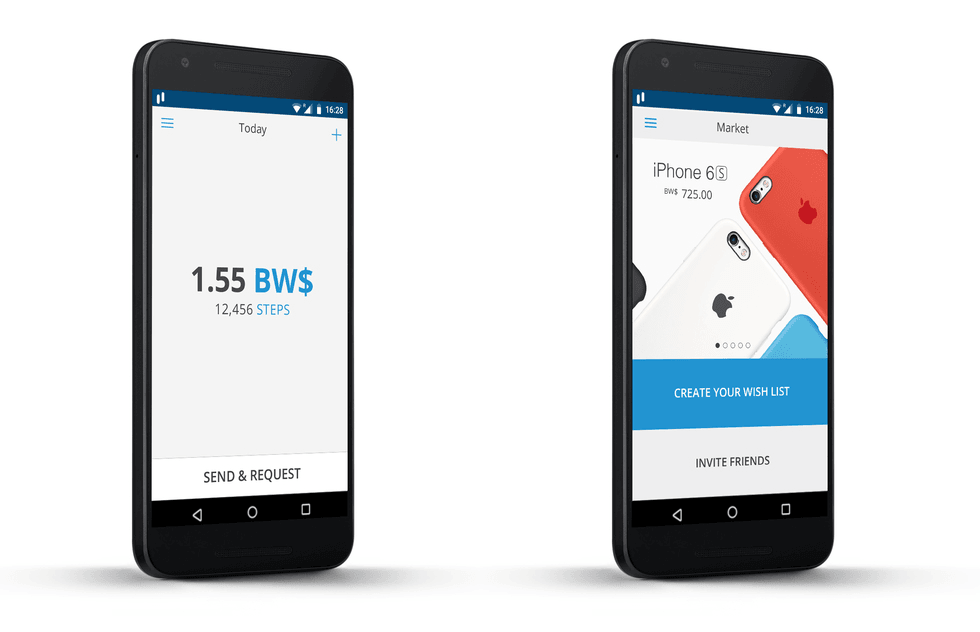 (source)
(source)How Do You Stay Afloat While Building a Reverse App Monetization Strategy?
Building your own app-based digital currency and paying people to use your app sounds like a great idea - if you have a broad enough user base to impress potential partners who would help you generate actual money from your app.
So how do you stay afloat as you build your app's audience? You incorporate more traditional app monetization ideas for publishers into your app's scheme while paying users from the very get-go.
Sponsored posts and products, classic in-app ads and even data monetization can help you keep your head above water while you build your reverse app monetization strategy to its full potential.
How to Choose the Right App Monetization Strategy
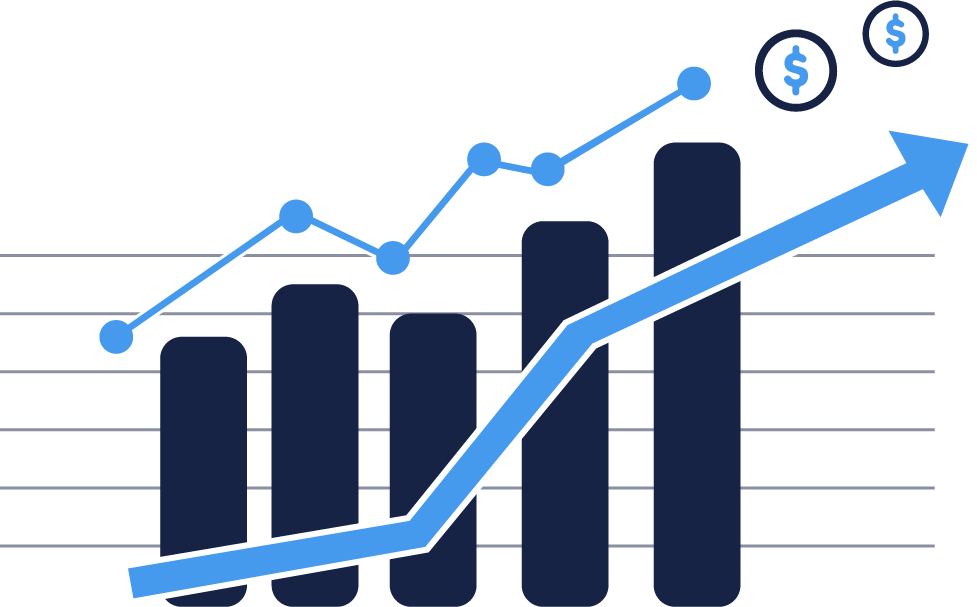
You can be the world's most-informed expert on the "how" part of app monetization. But actually making money with your app involves more than just raw knowledge - it requires strategy.
The first choice to make is which of the above app monetization strategies for publishers is right for you. When you are trying to make this choice for your app, consider the following:
- What do your app's users want to see or not see inside your app?
- Are your users typically in a place where they can afford to pay a monthly subscription or one-time fee for your app?
- How much do users trust your brand or app? Are you trusted enough to recommend products or services to them?
- Does your app have something to offer to other companies that could make them consider partnering with or sponsoring you?
- Are you comfortable recording data about your users and using it to make money?
If, for example, you suspect that your app's users would not appreciate banner ads inside your app, you may want to consider a less intrusive app monetization model. On the other hand, if your users typically do not have a lot of disposable income, a subscription or upgrade model might not work.
The bottom line
To choose a monetization strategy for your app, start with what you are comfortable with and what you know about your app’s users. From there, make the call — and remember that you can always pivot to new or additional app monetization efforts if you need to.
Why Startups Miss App Monetization Opportunities
Startups help big, new, exciting ideas roar to life. Centered on solutions, startup ideas often pack market-disrupting potential - the kind that can turn fledgling operations in 10 X 10 offices turn into billion-dollar corporations.
That kind of profit-making potential is exciting. It's so exciting, in fact, that many startups completely miss an enormous revenue opportunity inside their own mobile apps.
Focusing on the big idea is great, but when startups don't work out specific, high-performing methods, they miss out on huge monetization opportunities.
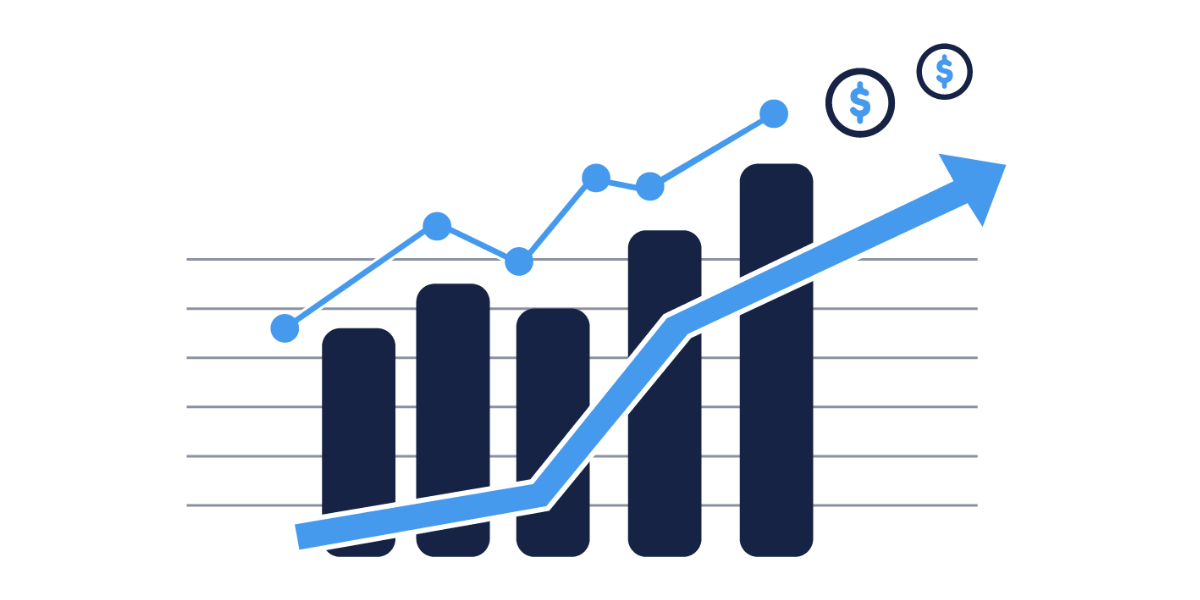
Best Practices for App Monetization
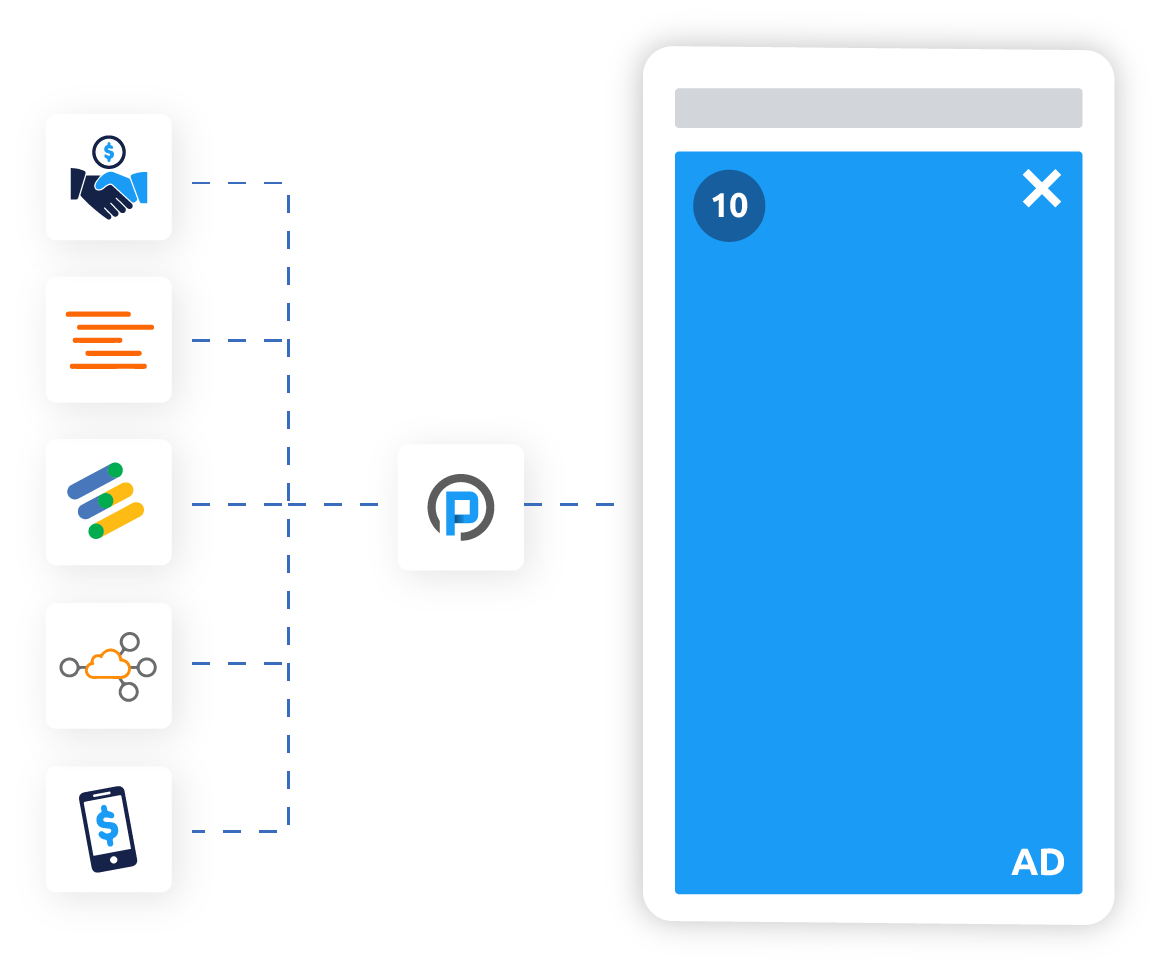
For publishers, app monetization means heavy competition and a lot of false starts. But following a few best practices can ensure that your monetization efforts never fall flat.
See How Competitors Monetize Their Apps
When you set out to implement a new app monetization strategy or increase your app's revenue, check out what your competitors are doing.
You don't have to copy them. You probably shouldn't - your app and content are unique. But you do need to see whether they are doing something you haven't considered before. And you need to see whether it's working for them and whether it might work for you.
Keep in mind that your competitors in the mobile app market might be different than your competitors on the internet at large or elsewhere within your industry.
Here are a few strategies to identify apps that compete with yours:
- Search the major app stores for a broad category that would include your app. The most downloaded apps in that category are good contenders to be your top competitors.
- Search the app stores for your app specifically. Your app should be the first search result, but which apps show up directly beneath yours? These are apps that are likely to be highly similar to yours, which makes them potential competitors.
- Read reviews of your app. If you pay attention, you may see reviewers comparing your app to other apps. These comparisons can reveal other apps with similar offerings to yours.
Once you have identified your mobile app competitors, do some digging. Download their apps and see how they're making their money. Do they have banner ads? Are they offering a freemium subscription model? See what's working and what isn't, and let that inform your app monetization strategy.
Balance App Monetization with UX
When you start researching app monetization for publishers, you may find yourself getting excited and eager to try out some new methods. That's great! But even though monetization is critical to the success of your app, don't let it blind you to the importance of the user experience.
UX is one of the single most important factors in whether a user will continue using an app. Of course, you need people to use your app if you plan to generate revenue with it. So, you'll just want to make sure you balance your monetization goals and activities with maintaining a good UX for your user base.
The easiest way to do that is to put yourself in the mind of your typical user.
Is that big, flashing banner ad taking away from their ability to enjoy the game, watch the video ads or read the article? Or does it complement the experience well?
Is that interstitial ad between levels a smooth and comfortable change or is it overly jarring?
The best approach is to measure user engagement metrics as you test new monetization strategies so you can find a way to have the two goals work in harmony.
Test to See Which Monetization Strategies Work
Good mobile apps are light, easy to use, and fast. You need to be like that, too.
You can do that by testing everything to see what works. Stay agile - and maximize your app's revenue - by making changes based on the results of your A/B tests.
As you perfect your app's monetization model, consider A/B testing the following:
- Freemium vs. free trial. Which method converts more free users into paying users?
- Traditional ads vs. sponsored posts. Which method provides a better UX? And which generates more revenue?
- Clicks vs. impressions for ad revenue. Between cost per mille/thousand impressions (CPM), cost per click (CPC), and cost per action (CPA), which gives you a better return?
- Higher prices vs. lower prices. For subscriptions or in-app purchases in your app, is it better to charge more and make fewer sales or charge less and make more sales?
You can A/B test nearly every aspect of your mobile app. And if the answer to any A/B test could sharpen your app monetization abilities, it is worth your time and effort.
Forget About Your Gut — Go with the Numbers to Monetize Your App
It's your app - you dreamed it and made it real - so trusting your gut about how to monetize it makes sense, right? Not always.
If you think an app monetization strategy will work well for your product and user base, that's a good place to start. But let the data inform how you move forward. Do your users actually engage with your mechanisms of monetization the way you want them to? Do you have enough users at this point to make it work?
If the answer is no, your gut was wrong and that's OK. It's a learning experience that will inform your future efforts. For your app to survive and even thrive, go with what the numbers say will work.
Keep Building Your App’s Audience
A publisher's ability to make money through an app is all about the user base. To increase revenue, you have to increase the size of your audience.
That means you can't set it and forget it when it comes to app monetization strategies. Over time, you will naturally lose users, but you won't naturally gain users unless you go viral.
Continually growing your audience is essential to growing your revenue. Publicize your app, run ad campaigns to promote it, and market it on your website.
Pay Attention to the App Stores
Unfortunately, it's the app stores' world and publishers are just living in it. They make the rules, and publishers who want to monetize their apps have to pay attention.
Read the developers guidelines from Apple and Google, and routinely check for updates. Apple and Android both used to favor paid apps as the top app monetization model. Now, pay-to-download apps are often among the least profitable, and both companies recommend models that look more like freemium or subscriptions.
The Future of App Monetization: 2021 and Beyond
Mobile apps have been around for a while, and they have changed rapidly. But the world of app monetization is still coming into focus. There is no Old World of app monetization - publishers are still mapping the New World, and the opportunity is boundless.
In 2021, we are already seeing cutting-edge publishers take the shaky first steps toward new frontiers in-app monetization.
Here are some examples:
Augmented Reality (AR) App Monetization
The ability to experience an improved version of the world around you has innate appeal, and it's already happening. With early AR adopters like Pokémon GO leading the way, AR has quickly become the hot new app monetization trend in 2021.
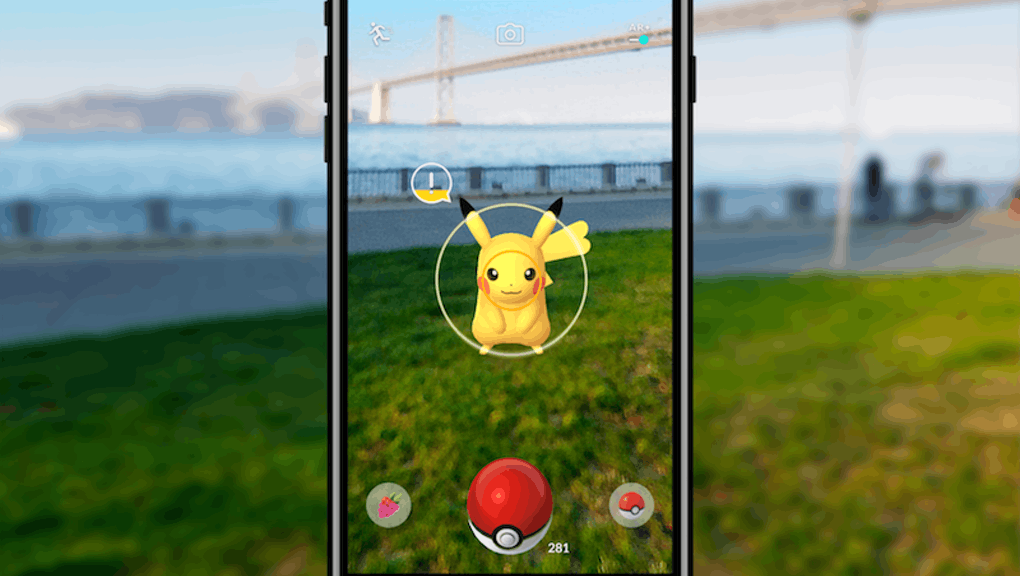 (source)
(source)
Mobile App Marketing Automation
Automation doesn't so much change the user's in-app experience as it changes the publisher's ability to delegate menial tasks to a computer. The end result is getting more done and having more time to refine your app monetization plan.
In-App Bidding
The advent of in-app bidding for ad inventory has exponentially increased publishers' ability to make money with their apps.
This technology - in which advertisers can bid on your app's ad inventory, increasing competition, and estimated cost per thousand impressions (eCPM) - is new to mobile apps, but it isn't really new. This is the mobile app version of header bidding, a hugely successful monetization strategy for desktop publishers.
Related Content

Check out the complete app monetization resource center, or dive deeper into any of the following related topics:
- 10 App Monetization Statistics to Know
- 6 Ways to Monetize Your App with Ads
- 8 App Monetization Strategies to Consider
- App Advertising Cost Breakdown: From Investment to ROI
- App Monetization: Building Your App Advertising Revenue
- Attribution on iOS 14.5: What App Publishers and Advertisers Need to Know
- How to Monetize an App
- Measuring the Performance of Your App Ads: 6 KPIs to Monitor
- Mobile App Monetization: 6 Questions to Ask Before Getting Started
- The Complete Guide to In-App Advertising Revenue Generation
- Playwire's Mobile Ads SDK
- App Mediation: Then vs. Now
- In-App Native Ads with RAMP for App
- Changing the Face of In-App Ad Monetization
App Monetization for Publishers: The Final Takeaway
For many publishers, mobile app monetization is an untouched gold mine waiting to diversify and increase revenue for years to come. There are many ways to monetize apps, and each method has its pros and cons. Understanding all of the strategies which fit your business can be overwhelming.
Playwire takes the guesswork out of app monetization for publishers. By providing a revenue amplification platform powered by both human and artificial intelligence, we help publishers reach their maximum eCPM potential. To learn more about how Playwire can monetize your app, contact us today.
Amplify
Your Ad Revenue
Accelerate your business and uncomplicate your ad tech stack, because you deserve a partner and a platform that demands more for you.
